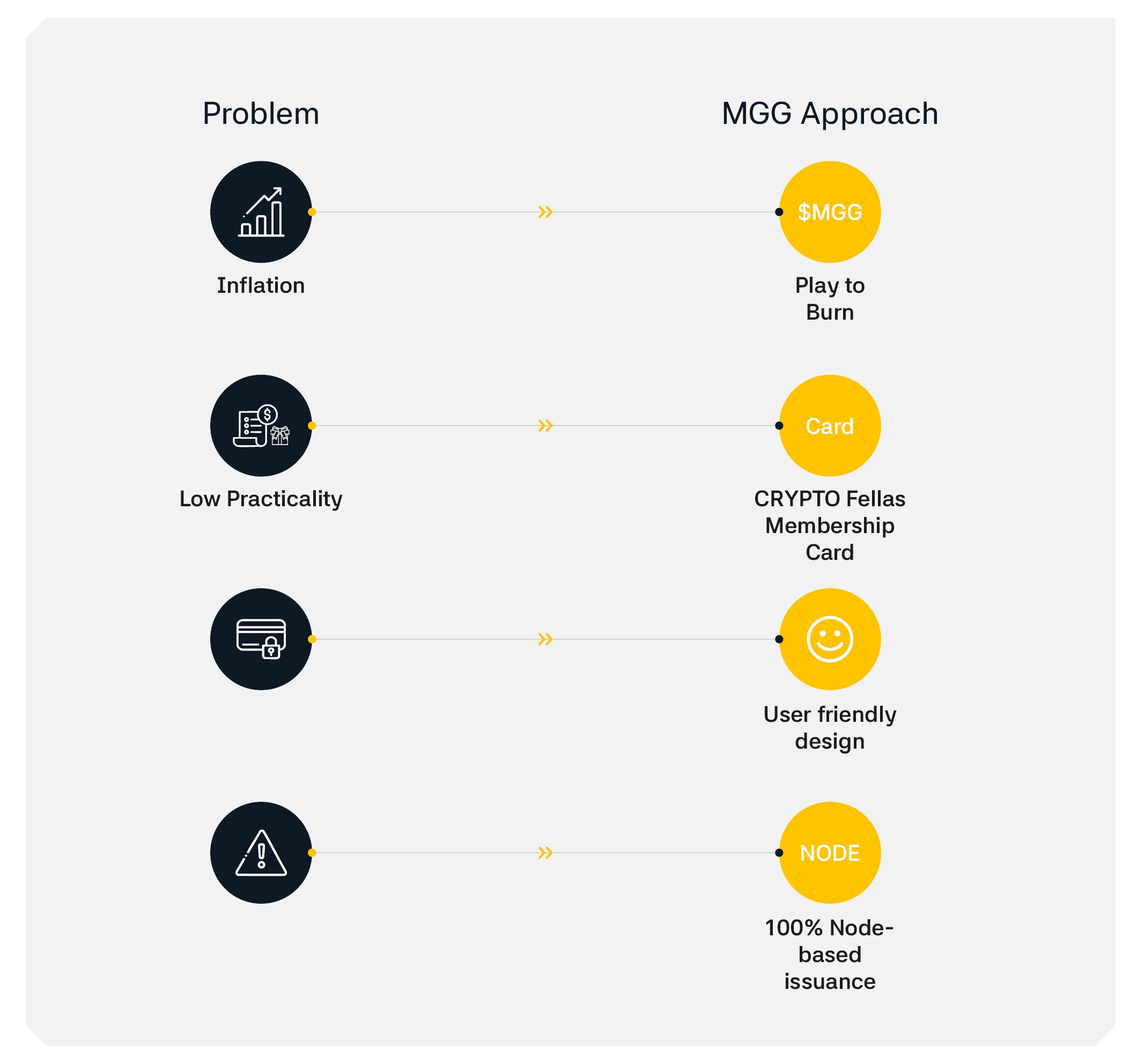Problem Statement
Market Analysis & Problem Statement

To understand MGG's innovativeness, it is crucial to first clearly diagnose why existing Web3, particularly P2E, projects have hit a wall. Their failures did not stem from simple operational mistakes but from structural problems inherent from the design stage. MGG accurately recognizes these issues and has incorporated fundamental solutions for each into its ecosystem design.
Unsustainable Token Economy: The Inflation Trap
The most fatal problem lay within the token economic model itself. Most P2E projects continuously issued tokens under the guise of 'rewards,' but they suffered from an absolute lack of mechanisms for the tokens to be meaningfully consumed or burned within the ecosystem. With an ever-increasing supply and limited demand, a decline in value was inevitable according to market principles. Users focused solely on immediately selling the acquired tokens on the market for cash, which created a vicious cycle that further accelerated the token's price drop. Ultimately, 'Play-to-Earn' was corrupted into 'Play-to-Dump,' and the ecosystem became no different from an unstable Ponzi scheme that relied only on the inflow of new funds.
Limited Utility: Value Disconnected from Reality
The utility of tokens acquired in-game was extremely limited. Most tokens had no practical use beyond purchasing in-game items or being exchanged for other cryptocurrencies on an exchange. This resulted in the token's value relying solely on speculative demand. As digital assets failed to connect directly with real-world goods or services, their value was like a sandcastle floating in the air without a foundation in the real economy. Users felt a disconnect from reality when they couldn't even buy a cup of coffee with the assets they earned through gaming, which became a major factor in diminishing their long-term motivation to participate.
High Barrier to Entry: A League for the Few
The innovative technology of Web3 ironically became the biggest hurdle to mass adoption. Complex wallet creation and management, unpredictable gas fees, and interactions with smart contracts were insurmountable obstacles for ordinary users unfamiliar with blockchain technology. Furthermore, many Web3 services offered unfriendly, developer-centric UI/UX, which degraded the user experience. Ultimately, Web3 gaming was relegated to a league for a small number of tech-savvy early adopters, failing to secure a broad user base and hitting a wall in its growth.
Lack of Trust and Transparency: The Shattered Dream of Community
Despite advocating for decentralization, the operation of many projects was carried out in a centralized manner by a small number of development teams or foundations. The token distribution process was opaque, and it was common for massive amounts of tokens allocated to the team and early investors (VCs) to flood the market, causing a price crash. The community's voice was excluded from key decision-making processes, which severely damaged user trust in the project. As trust eroded, the community disintegrated, and the ecosystem lost its momentum for growth.